Ethics of Workplace Wellness Industry
Landmark article debunks wellness industry's claims of ROI and shows that coercive programs can actually harm employees.

Landmark article debunks wellness industry's claims of ROI and shows that coercive programs can actually harm employees.

Get Involved
Our authors are what set Insurance Thought Leadership apart.
|
Partner with us
We’d love to talk to you about how we can improve your marketing ROI.
|

Tom Emerick is president of Emerick Consulting and cofounder of EdisonHealth and Thera Advisors. Emerick’s years with Wal-Mart Stores, Burger King, British Petroleum and American Fidelity Assurance have provided him with an excellent blend of experience and contacts.
Insurance is a risk-sharing process requiring underwriting but is rapidly moving to a social welfare platform that acts as if it can repeal gravity.

Get Involved
Our authors are what set Insurance Thought Leadership apart.
|
Partner with us
We’d love to talk to you about how we can improve your marketing ROI.
|

Mike Manes was branded by Jack Burke as a “Cajun Philosopher.” He self-defines as a storyteller – “a guy with some brain tissue and much more scar tissue.” His organizational and life mantra is Carpe Mañana.
These questions can help attorneys address issues head-on with clients and avoid risky approaches that may lead to malpractice.

Get Involved
Our authors are what set Insurance Thought Leadership apart.
|
Partner with us
We’d love to talk to you about how we can improve your marketing ROI.
|

Porter Leslie is the president of Ametros. He directs the growth of Ametros and works with its many partners and clients.
A reminder to insurers: The world does not need you if there are no claims. This is your purpose, your reason for existing.

Get Involved
Our authors are what set Insurance Thought Leadership apart.
|
Partner with us
We’d love to talk to you about how we can improve your marketing ROI.
|

Chris Burand is president and owner of Burand & Associates, LLC, a management consulting firm specializing in the property-casualty insurance industry. He is recognized as a leading consultant for agency valuations and is one of very few consultants with a certification in business appraisal.
While the outlook for employee and voluntary benefits is promising, the market no longer looks anything like it once did.

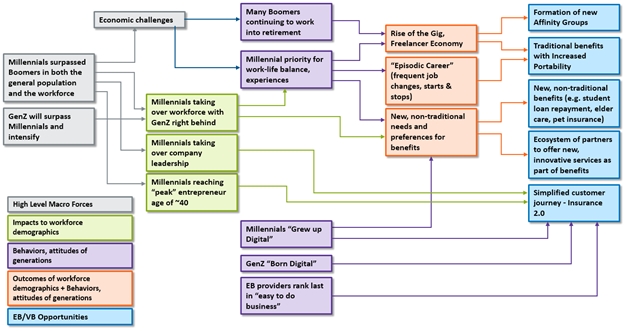 Figure 1: Forces creating opportunities in the employee and voluntary benefits market
The two largest generations, Baby Boomers and millennials, are in the midst of rapid transition. Their shifting positions within the general population, the workforce and business leadership are rapidly reshaping the market landscape. The behaviors and attitudes of both generations are substantially influenced by economic conditions, and digital technology is rapidly becoming an integral part in their lives. Gen Z is further intensifying this shift. These factors have helped fuel the rise of the gig and sharing economy, which is estimated to encompass 35% of the U.S. workforce today and is continuing to grow and expand.[i]
Together, these and other forces are creating employee and voluntary benefit needs and expectations that present unprecedented opportunities for growth. The growth in new affinity groups; increased demand for benefit portability; and the growing demand for new, non-traditional benefits and services that offer a simplified, satisfying customer experience are just a few of the dramatic shifts in needs and expectations.
See also: 4 Good Ways to Welcome Employees
The market landscape will continue to rapidly transform as workers’ and employers’ needs and expectations shift, healthcare reform continues to change, industry boundaries shift with M&A, marketplaces evolve, new products are introduced and new competitors emerge from within and outside the industry. The surge in employee demand for innovative voluntary benefits are an increasingly critical element to attract and retain top talent for companies, particularly as we continue to see unemployment rates decline, as boomers retire and as the fight for technology talent intensifies.
Adding fuel to the market shift is the rapid emergence of new technologies like wearables and advanced medical devices and exploding data (among others) that are redefining the insurance market into one focused on well-being, lifestyle and longevity, rather than illness and death. Innovative benefits are increasingly focused on digital health and well-being, elderly care, pet insurance, college loan repayment and the demand for digitally enabled customer engagement.
Making the Marketplace and Workforce Changes Work for You
Greenfields and startups saw these opportunities early, but existing insurers are now quickly developing strategies and plans to capture this once-in-a-generation opportunity. Insurtech has fueled significant investment by venture capitalists, spawning companies like Zenefits, Maxwell Health, ZhongAn, Discovery, Allan, Bright Health and Clover Health. We now see existing insurers begin to focus on the opportunities, such as MetLife focusing on the SMB market. At the same time, the increased demand for portability of voluntary benefits due to the generational acceptance of frequent job change offers insurers a unique opportunity to cost-effectively capture employees as individual customers and to keep and grow individual relationships (and premiums), rather than losing relationships through attrition.
The robust, once-in-a-generation opportunity is seeing insurers of all types developing strategies and plans to capture business, including:
--Traditional worksite carriers specializing in supplemental products such as accident, cancer, critical illness, hospital indemnity, voluntary STD, term life, universal life and heart/stroke insurance are expanding their portfolios to include voluntary LTD, gap, dental, whole life or vision products.
--True group carriers that historically specialized in group products, including term life, basic AD&D, group STD and LTD, dental and vision are expanding their product portfolios to include accident, critical illness, hospital indemnity and gap insurance.
--Medical carriers specializing in major medical coverage have been acquiring supplemental benefit carriers or administrators to expand their portfolio with supplemental products. They may have a competitive advantage because of their ability to harness and analyze extensive medical data.
--Finally, we are seeing a range of other carriers including multi-nationals, P&C carriers, retiree market specialists, and others that are entering the market with unique voluntary benefits like pet insurance and legal insurance as well as expanded affinity market programs to capture the opportunity.
Underlying each of these is the need to respond with innovative products, plan designs, underwriting and pricing as well as new services, distribution channels and customer engagement approaches enabled by modern digital platforms. Thinking about the best strategic approaches to pursue to maximize the potential of these new products, services and processes will be critical for success. Several approaches that are gaining traction include:
--Product differentiation: Insurers can differentiate themselves in a crowded market by offering a complementary portfolio of unique products, services and benefits. Differentiation may be achieved through value-added services (if exclusivity is achieved), creating an integration model across products, aligning products and benefits with a carrier’s identity, etc.
--Adjacent markets: Traditional group carriers are developing individual products to compete in digital, direct-to-consumer markets, and traditional individual carriers are developing group products to compete in the gig economy or growing affinity markets. Carriers operating in the consumer market are expanding into retiree markets, and carriers in the retiree market are moving into consumer markets.
--Product bundling: The demand for product bundling, or “combo” products, has recently increased. Sample combo products may include a group hospital indemnity product with accident, critical illness and term life riders or a universal life product with a long-term care rider. While these are just two examples, a large number of product combinations may be considered. In all market segments, and in particular the SMB market, combo products can broaden coverage, increase affordability and reduce or eliminate the need for underwriting by limiting anti-selection.
--Rapid product development: We are seeing an increasingly quick pace of product development, which is in stark contrast to the long shelf life of products before the ACA. In addition, carriers in the large market are frequently required to customize benefits and rates for distribution partners as well as employers. Keeping up with this pace requires a nimble technology solution for administration, billing, claims and operations. Carriers that are using newer technologies will have a distinct competitive advantage, especially in the large account and broker markets, as these technologies provide increased flexibility and speed to market. This competitive advantage also applies to the bottom line, as more efficient technologies can eliminate manual processes and reduce expense margins.
See also: Value in Informal Employee Networks
--Partnering with emerging technology/insurtech: Insurance markets are being flooded with new insurtech startups. Some of these startups provide products or services that complement employee and voluntary benefit carriers’ value propositions. Existing carriers would be wise to identify the key startup companies in their markets and establish strategic, beneficial partnerships.
Reap the Benefits of This Unique Market Opportunity
There are a multitude of exciting opportunities for employee and voluntary benefits insurers in this rapidly evolving market. The unprecedented pace of change will drive out old business models and allow new ones to flourish with the introduction of products and the offering of new services, plus interesting mergers and acquisitions such as Aetna and CVS, and the emergence of new business models via insurtech and established insurers.
There is no longer a doubt or debate regarding the need to digitalize insurance, but this still continues to be an unpaved path for insurers. Not many understand the best way to achieve it. Insurers are still in the midst of legacy modernization of their core systems for strengthening their back-end processing capabilities, but most realize that these initiatives will fall short without digital transformations that will bring meaningful benefits to customers and ultimately to win them. In this new market, insurers will need a single platform to support individual, group, voluntary benefits and worksite across all lines of business and with a design flexible to adapt to new products, workflows, distribution channels and even devices. The platform will need to enable portability of voluntary benefits to individual policies as well as innovation of products where the same product can be offered as an employer-paid, voluntary or worksite product. Platforms must increasingly make it easy to customize plan options for groups.
There are a multitude of potential futures for group, employee and voluntary benefits insurers in an increasingly volatile world. The rapid and unprecedented pace of change will drive out old business models and allow new ones to flourish with the introduction of products and the offering of new services, and much more, from both new insurtech startups and established insurers.
At the heart of the disruption is a shift from Insurance 1.0 of the past to Digital Insurance 2.0 of the future. The gap is where innovative insurers are taking advantage of a new generation of buyers, capturing the opportunity to be the next market leaders in the digital age.
It is a once-in-a-lifetime opportunity for insurers to redefine the market and competitive landscape in employee and voluntary benefits. Be one of them!
Figure 1: Forces creating opportunities in the employee and voluntary benefits market
The two largest generations, Baby Boomers and millennials, are in the midst of rapid transition. Their shifting positions within the general population, the workforce and business leadership are rapidly reshaping the market landscape. The behaviors and attitudes of both generations are substantially influenced by economic conditions, and digital technology is rapidly becoming an integral part in their lives. Gen Z is further intensifying this shift. These factors have helped fuel the rise of the gig and sharing economy, which is estimated to encompass 35% of the U.S. workforce today and is continuing to grow and expand.[i]
Together, these and other forces are creating employee and voluntary benefit needs and expectations that present unprecedented opportunities for growth. The growth in new affinity groups; increased demand for benefit portability; and the growing demand for new, non-traditional benefits and services that offer a simplified, satisfying customer experience are just a few of the dramatic shifts in needs and expectations.
See also: 4 Good Ways to Welcome Employees
The market landscape will continue to rapidly transform as workers’ and employers’ needs and expectations shift, healthcare reform continues to change, industry boundaries shift with M&A, marketplaces evolve, new products are introduced and new competitors emerge from within and outside the industry. The surge in employee demand for innovative voluntary benefits are an increasingly critical element to attract and retain top talent for companies, particularly as we continue to see unemployment rates decline, as boomers retire and as the fight for technology talent intensifies.
Adding fuel to the market shift is the rapid emergence of new technologies like wearables and advanced medical devices and exploding data (among others) that are redefining the insurance market into one focused on well-being, lifestyle and longevity, rather than illness and death. Innovative benefits are increasingly focused on digital health and well-being, elderly care, pet insurance, college loan repayment and the demand for digitally enabled customer engagement.
Making the Marketplace and Workforce Changes Work for You
Greenfields and startups saw these opportunities early, but existing insurers are now quickly developing strategies and plans to capture this once-in-a-generation opportunity. Insurtech has fueled significant investment by venture capitalists, spawning companies like Zenefits, Maxwell Health, ZhongAn, Discovery, Allan, Bright Health and Clover Health. We now see existing insurers begin to focus on the opportunities, such as MetLife focusing on the SMB market. At the same time, the increased demand for portability of voluntary benefits due to the generational acceptance of frequent job change offers insurers a unique opportunity to cost-effectively capture employees as individual customers and to keep and grow individual relationships (and premiums), rather than losing relationships through attrition.
The robust, once-in-a-generation opportunity is seeing insurers of all types developing strategies and plans to capture business, including:
--Traditional worksite carriers specializing in supplemental products such as accident, cancer, critical illness, hospital indemnity, voluntary STD, term life, universal life and heart/stroke insurance are expanding their portfolios to include voluntary LTD, gap, dental, whole life or vision products.
--True group carriers that historically specialized in group products, including term life, basic AD&D, group STD and LTD, dental and vision are expanding their product portfolios to include accident, critical illness, hospital indemnity and gap insurance.
--Medical carriers specializing in major medical coverage have been acquiring supplemental benefit carriers or administrators to expand their portfolio with supplemental products. They may have a competitive advantage because of their ability to harness and analyze extensive medical data.
--Finally, we are seeing a range of other carriers including multi-nationals, P&C carriers, retiree market specialists, and others that are entering the market with unique voluntary benefits like pet insurance and legal insurance as well as expanded affinity market programs to capture the opportunity.
Underlying each of these is the need to respond with innovative products, plan designs, underwriting and pricing as well as new services, distribution channels and customer engagement approaches enabled by modern digital platforms. Thinking about the best strategic approaches to pursue to maximize the potential of these new products, services and processes will be critical for success. Several approaches that are gaining traction include:
--Product differentiation: Insurers can differentiate themselves in a crowded market by offering a complementary portfolio of unique products, services and benefits. Differentiation may be achieved through value-added services (if exclusivity is achieved), creating an integration model across products, aligning products and benefits with a carrier’s identity, etc.
--Adjacent markets: Traditional group carriers are developing individual products to compete in digital, direct-to-consumer markets, and traditional individual carriers are developing group products to compete in the gig economy or growing affinity markets. Carriers operating in the consumer market are expanding into retiree markets, and carriers in the retiree market are moving into consumer markets.
--Product bundling: The demand for product bundling, or “combo” products, has recently increased. Sample combo products may include a group hospital indemnity product with accident, critical illness and term life riders or a universal life product with a long-term care rider. While these are just two examples, a large number of product combinations may be considered. In all market segments, and in particular the SMB market, combo products can broaden coverage, increase affordability and reduce or eliminate the need for underwriting by limiting anti-selection.
--Rapid product development: We are seeing an increasingly quick pace of product development, which is in stark contrast to the long shelf life of products before the ACA. In addition, carriers in the large market are frequently required to customize benefits and rates for distribution partners as well as employers. Keeping up with this pace requires a nimble technology solution for administration, billing, claims and operations. Carriers that are using newer technologies will have a distinct competitive advantage, especially in the large account and broker markets, as these technologies provide increased flexibility and speed to market. This competitive advantage also applies to the bottom line, as more efficient technologies can eliminate manual processes and reduce expense margins.
See also: Value in Informal Employee Networks
--Partnering with emerging technology/insurtech: Insurance markets are being flooded with new insurtech startups. Some of these startups provide products or services that complement employee and voluntary benefit carriers’ value propositions. Existing carriers would be wise to identify the key startup companies in their markets and establish strategic, beneficial partnerships.
Reap the Benefits of This Unique Market Opportunity
There are a multitude of exciting opportunities for employee and voluntary benefits insurers in this rapidly evolving market. The unprecedented pace of change will drive out old business models and allow new ones to flourish with the introduction of products and the offering of new services, plus interesting mergers and acquisitions such as Aetna and CVS, and the emergence of new business models via insurtech and established insurers.
There is no longer a doubt or debate regarding the need to digitalize insurance, but this still continues to be an unpaved path for insurers. Not many understand the best way to achieve it. Insurers are still in the midst of legacy modernization of their core systems for strengthening their back-end processing capabilities, but most realize that these initiatives will fall short without digital transformations that will bring meaningful benefits to customers and ultimately to win them. In this new market, insurers will need a single platform to support individual, group, voluntary benefits and worksite across all lines of business and with a design flexible to adapt to new products, workflows, distribution channels and even devices. The platform will need to enable portability of voluntary benefits to individual policies as well as innovation of products where the same product can be offered as an employer-paid, voluntary or worksite product. Platforms must increasingly make it easy to customize plan options for groups.
There are a multitude of potential futures for group, employee and voluntary benefits insurers in an increasingly volatile world. The rapid and unprecedented pace of change will drive out old business models and allow new ones to flourish with the introduction of products and the offering of new services, and much more, from both new insurtech startups and established insurers.
At the heart of the disruption is a shift from Insurance 1.0 of the past to Digital Insurance 2.0 of the future. The gap is where innovative insurers are taking advantage of a new generation of buyers, capturing the opportunity to be the next market leaders in the digital age.
It is a once-in-a-lifetime opportunity for insurers to redefine the market and competitive landscape in employee and voluntary benefits. Be one of them!
Get Involved
Our authors are what set Insurance Thought Leadership apart.
|
Partner with us
We’d love to talk to you about how we can improve your marketing ROI.
|

Denise Garth is senior vice president, strategic marketing, responsible for leading marketing, industry relations and innovation in support of Majesco's client-centric strategy.
Over the past few years, we have seen direct-to-customer channels, insurtech propositions, aggregator sites, affinity partnerships and more.

"Those who can make insurance easier for customers to understand and buy stand a good chance of capturing business from companies whose processes remain complex. In today’s new digital world, it is not about any single channel but rather about a multichannel approach that is based on consumer choice." – Denise Garth, SVP of strategic marketing, industry relations and innovation at MajescoThe emergence of new channels has raised the stakes for incumbent insurers, nimble newcomers and players outside of insurance alike, all of whom have an opportunity to capitalize or, otherwise, get left behind. In this installment, on distribution, we examine:
"The reach of this digital transformation goes way beyond the elimination of 'the middle man' from a distribution point of view. The direct digital channel dominates very few markets and deals only with compulsory insurance. In the vast majority of markets, a multichannel-oriented customer continues — with variations from country to country — to choose at least at some point of the customer journey to interact with an intermediary." – Matteo Carbone, founder and director at Connected Insurance ObservatoryWhile many customers in many circumstances may prefer the direct channel to the agency path, insurers should not necessarily place all their strategic eggs in this one basket. Insurance has always been sold, as they say, and never bought, so any portal for buying insurance, however slick, is at a disadvantage by its very nature. See also: Distribution: About To Get Personal The way to get insurance products into customers’ hands may, in fact, be to integrate them into other products that are bought, whereby the insurance becomes part of a bundle or an add-on. This philosophy has boosted the popularity of affiliate channels, which, in addition to taking even more friction out of the process, also bypass any issues that may exist with consumer trust, by tying the insurance to a trusted brand that consumers know, respect and perhaps already interact with daily or weekly. 2. Expanding Affiliate Channels 89% of insurer respondents are increasing their distribution through affiliate partners … Current examples of affiliate channels are major retailers, such as Tesco in the U.K. and Falabella in South America, but theoretically the affiliate channel could include just about anything, with the insurer effectively becoming an API that other consumer applications can plug into, like for instance ride-sharing and taxi apps for travel insurance. The scale that incumbent insurers can offer in this channel may put them in good stead against their insurtech competitors; large affiliates can benefit from the brand equity of household-name insurers, and the resultant selling partnership will likely prove more successful for all involved.
"We're looking into partnerships with companies from different sectors: how we can plug in, bringing the insurance dimension and being the insurance carrier, while the partner does all the front-end, customer-facing stuff. And as I like to call it, we're just a third-party API." – João Neiva, head of innovation, IT and business change at Zurich Topas LifeAnother important indirect channel – but one on which we have not gathered stats – is bancassurance. While the concept is making headway in emerging markets, it has been out of fashion in Western markets over the past decade. The interest expressed this January by Italian bank Intesa Sanpaolo in a tie-up with Assicurazioni Generali shows the concept is not dead – but this deal was nonetheless scrapped the following month. 3. The Omni-Channel Grail: Consistent Multi-Channel Experiences As of today, many insurers operate both direct-to-customer and affiliate channels alongside their traditional agency channels. Whatever the blend of channels that customers ultimately come through, it is important for insurers to offer a consistent experience across all of them (a consistent experience need not necessarily be an identical one). It’s bad enough if one channel offers a comparatively poor or irregular service, this is then compounded because consumers are increasingly – as in retail and e-commerce – using multiple channels as part of their research and decision-making process, and an inconsistent (or in any way confusing) experience will lead valuable customers to bounce or churn. In certain segments, a majority of customers may well come through a broker/agency channel for the foreseeable future, but it would be unwise to ignore the role of the direct channel in prepping them and to neglect obvious re-engagement points during the process that can recall, reinforce and build on the online experience.
"We believe that this is an opportunity for brokers and intermediaries to innovate and continue to create new sources of value for their B2C and B2B segments. For instance, identifying and carving out new and emerging B2C (micro-insurance, flood, non-standard risks, risk pools/schemes, older generation/retirees) and B2B (IP-based startups, cyber, supply chain, cross-border liability, terrorism) needs and creating innovative channels to access them." – Sam Evans, managing director at Eos Venture PartnersWhile much of insurers’ backroom tech can be aligned across channels, the face-to-face element in indirect channels can prove more challenging to coordinate, especially as we are here dealing with a multitude of different selling organizations with a multitude of different working cultures. This is not to say that the face-to-face element is a tale of lost opportunities and inefficiencies – if it’s put to work effectively, there’s seldom a better way to create lasting customer engagement and up-selling opportunities. So, Is Your Customer Experience Consistent Across Channels? Customer experience (CX) professionals in insurance are chasing the same omni-channel grail as their analogues in other digitally disrupted industries, like retail/e-commerce, that is: to ensure that customers enjoy the same product and service experience regardless of which channel they come through. Let’s start by seeing how well Insurers currently perform in this regard: Only 23% of insurers believe their customer experience is consistent across channels …
 There is clearly still a long way to go before omni-channel is the norm in insurance, and the steady addition of new channels will further complicate matters for insurers chasing channel consistency.
There is clearly still a long way to go before omni-channel is the norm in insurance, and the steady addition of new channels will further complicate matters for insurers chasing channel consistency.
"Insurers’ infrastructure, which has been built over literally hundreds of years, never anticipated having multiple channels of communication to support, so insurers are scrambling to learn how to do that." – Stephen Applebaum, managing partner at Insurance Solutions GroupFrom our regional segmentation, we can reveal that Asia-Pacific trails our other regions on this measure. This is likely a consequence of the pursuit of new channels in the region (as we noted with the prevalence of the direct-to-customer channel): It is more difficult to maintain consistency across a multitude of emerging channels than across a core of traditional ones. 4. Do You Have an Omni-Channel Strategy? The creation of an explicit omni-channel strategy is the first step of many toward being able to offer a consistent customer experience (CX) across channels. 62% of insurers have an omni-channel strategy… It is encouraging to see that the majority of insurers do have formal omni-channel strategies, and this should go a long way toward raising the low percentage of insurers currently able to offer a consistent customer experience across channels.
 It will likely be a number of years before today's omni-channel strategies yield concrete results, and, as we pointed out, the continuing complication of the distribution landscape through the addition of new channels will mean insurers must run just to stay where they are.
It will likely be a number of years before today's omni-channel strategies yield concrete results, and, as we pointed out, the continuing complication of the distribution landscape through the addition of new channels will mean insurers must run just to stay where they are.
"Most insurers are still focused on e-commerce, but the leaders are developing longer-lasting relationships by using their digital capabilities to gain enhanced customer knowledge and harnessing that information to profile customers more effectively, fine-tune underwriting and deliver customized solutions." – Michael Quindazzi, business development leader and management consultant at PwC5. Attack of the Aggregators! Our final question on distribution relates to the role of aggregators like U.K.-based comparethemarket.com, U.S.-based comparenow.com and Singapore-based GoBear. These have burgeoned since the millennium, inserting an extra distributional step between insurers and their prospective clients, and have had a major impact on the market (just like comparison sites in other industries) both in terms of the overall business model and from a branding and customer-relationship perspective. By allowing, and encouraging, customers to pit insurers against each other on a price-by-price basis, these sites have further commoditized insurance lines and driven down premium prices and margins.
"The process of buying insurance can be simple – go online, compare the relevant information, select an insurer and pay. But three days later you get a 22-page printed policy at home, written by a lawyer. As a layman, you’re totally lost. What customers really want are simpler and easy-to-understand products so that they regain trust in this industry. Get that trust, and it will drive revenues." – Andre Hesselink, CEO at GoBearDue to a variety of factors, including marketing budgets and regulation, the effects of aggregators are neither uniform across lines nor across geographies. For example, according to a recent survey of consumers by consultancy Finaccord, more than 40% of respondents in the U.K. had taken out car insurance via an aggregator, compared with only 5% in the U.S. and Canada.
 The impact of aggregators can be felt across the whole ecosystem, so we asked all our respondents to specify how big an impact they are having on their organizations. Overall, 14% indicated a large impact, 29% a medium one, 37% a small one and 20% none at all. As we can see from the infographic above, a relatively small proportion of the ecosystem is heavily affected, although the impact is being widely felt (more than three quarters of respondents citing some impact).
See also: Taking the ‘I’ Out of Insurance Distribution
From our regional segmentation, we can reveal that Asia-Pacific trails on this measure. As we have pointed out, while many insurers there do have digital channels, the overall volume of business being done this way is still quite low – and this potentially explains the lower regional score. However, as insurers in the region actively build and promote their direct capabilities, we expect aggregator impact there to quickly catch up.
6. Distribution: The Fulcrum of Market Disruption?
We suggested in our previous post on marketing and customer-centricity that changes to distribution are what fundamentally lies behind today's changing customer expectations and behaviors (specifically the internet and the rise of digital for everything from research to commerce).
The impact of aggregators can be felt across the whole ecosystem, so we asked all our respondents to specify how big an impact they are having on their organizations. Overall, 14% indicated a large impact, 29% a medium one, 37% a small one and 20% none at all. As we can see from the infographic above, a relatively small proportion of the ecosystem is heavily affected, although the impact is being widely felt (more than three quarters of respondents citing some impact).
See also: Taking the ‘I’ Out of Insurance Distribution
From our regional segmentation, we can reveal that Asia-Pacific trails on this measure. As we have pointed out, while many insurers there do have digital channels, the overall volume of business being done this way is still quite low – and this potentially explains the lower regional score. However, as insurers in the region actively build and promote their direct capabilities, we expect aggregator impact there to quickly catch up.
6. Distribution: The Fulcrum of Market Disruption?
We suggested in our previous post on marketing and customer-centricity that changes to distribution are what fundamentally lies behind today's changing customer expectations and behaviors (specifically the internet and the rise of digital for everything from research to commerce).
"The most important driver of success for insurtech start-ups has been distribution. Distribution in insurance (more specifically in personal lines, but increasingly so in commercial lines) is getting disintermediated as data becomes increasingly transparent between the buyer and seller." – Sam Evans, managing director at Eos Venture PartnersAs a result, we predicted that traditional channels might be marginally more intact in North America than elsewhere – as an explanation for this region's marginally lesser prioritization of the customer (as we saw from our priority tables in Global Trend Map No. 3: Priorities). Our reasoning: If new channels are the fundamental enablers of disruption, the more stable the traditional channels are, the less disruption insurers will face and therefore the less forcefully they will have to prioritize the customer. So, what do our regional stats on distribution reveal? ... We noted that the direct-to-customer channel is less prevalent in North America than elsewhere, so it would indeed appear that traditional distribution is – marginally – more intact here. This strength of traditional channels translates into lower levels of lost business for North American carriers. Indeed, in our earlier post on insurtech – Global Trend Map No. 2: Insurtech – where we introduced the "disruption score," only a quarter of insurers and reinsurers in North America reported losing market share to new entrants (versus 47% in Asia-Pacific). The model we are applying is one in which distribution disruption leads to customer disruption and thereby to a complete re-evaluation of the customer relationship. So, what can this tell us about Europe and Asia-Pacific? Let us start with Asia-Pacific: On the distribution level, we encounter a high incidence of direct channels, low channel consistency and a high priority allocated to distribution diversification (as we saw from our priority tables in Global Trend Map No. 3: Priorities). And following this through, we find a corresponding degree of disruption on the customer level, with APAC respondents scoring high on measures of customer priority (as we saw in the previous section on marketing and customer-centricity). It is clear, therefore, that APAC insurers know they are in trouble and that they are trying to meet the 21st-century consumer head-on. This is very much in line with our disruption score for the region, whereby 47% of in Asia-Pacific stated that they were losing market share to new entrants, a high score in which fear may well play a considerable role. Europe is an interesting case. In terms of distribution, we note solid adoption of direct-to-customer channels, and the continent has in many ways been a pioneer in its use of affiliate channels and aggregators (we explore these themes in more depth in our regional profile on Europe – read ahead here). The customer relationship here (along with Asia-Pacific) is marginally more problematic than in North America, based on the forceful prioritization of the customer we found here. Does this mean that Europe finds itself in the relatively more disrupted camp, along with Asia-Pacific? Not necessarily. We cannot help but notice Europe’s low disruption score of 23% (much lower than Asia-Pacific's, in line with North America), meaning that, at least in carriers' perceptions, relatively little market share is currently being lost. One way to square this with our foregoing observations on the distribution and customer situation in Europe would be if European insurers were rising better to the challenge of serving customers across a complex distribution landscape than their counterparts in Asia-Pacific are. This would imply that Europe is perhaps slightly ahead of the curve and has had some time to adjust. In line with this hypothesis is the low prominence of the chief customer officer role among recent or forthcoming appointments at European insurers (contrasting with its importance in Asia-Pacific). Our inference from this is not that customer-related roles do not exist in Europe (after all, Europe allocated the highest overall priority to customer-centricity out of all our regions) but rather that they are not of such recent creation. So, we can tentatively conclude that, while Europe and Asia-Pacific are both undergoing distribution- and customer-driven disruption, Europe has entered deeper into this. There is, as such, no wholesale panic regarding lost market share through new entrants. In this sense, Europe would be not so much the most disrupted as the longest-disrupted of our key regions. It will be interesting to observe how the sense of disruption in Europe, North America and Asia-Pacific waxes and wanes as the market develops. The characterization we have attempted here is based on fine gradations, and, with the global market fluctuating as it is, there is no reason to believe development in any region will be linear. We return to these issues – and to the perennial question of disruption – in the regional profiles section with which we close the report (read ahead here).
"Technology is changing more rapidly today than ever, which is changing the nature of risk. The distribution of insurance products and services is poised for rapid change. Agents and brokers will have a role to play as the distribution model changes. Those agents and brokers that are willing to adapt will thrive, those that rely on the old methods will continue to be successful until they wake up one day and they are not." – Steve Anderson, president at the Anderson NetworkAs insurers around the world pursue customers, we are left with the question of the brokers and agents who hitherto have been the face of the insurance industry. Intermediaries still hold the cards in many customer segments and business lines – especially for complex, high-value products in life and commercial – and can play an important role more broadly as part of the omni-channel mix. And, before we write them off too hastily, we should remember one thing: Although intermediaries no longer own distribution in the strictest sense, it is debatable whether carriers will want to take all aspects of customer-servicing in house just because they can.
"Chatbots and guided conversations – in the not-too-distant future – will significantly change the role of agents and brokers when providing insurance knowledge and resources to policyholders. Expert advice will still be needed, but chatbots and guided conversations will provide much of the basic information to the digital-savvy consumer anytime and anywhere." – Steve AndersonFor insurance players big and small, distribution is the key to getting in front of today's customers, in the sense either of tapping totally new segments or of fighting off competitors' threats to the existing book. However, if you cannot follow up on your promises across the customer life-cycle, then all that top-of-funnel work will have been in vain.

Get Involved
Our authors are what set Insurance Thought Leadership apart.
|
Partner with us
We’d love to talk to you about how we can improve your marketing ROI.
|

Alexander Cherry leads the research behind Insurance Nexus’ new business ventures, encompassing summits, surveys and industry reports. He is particularly focused on new markets and topics and strives to render market information into a digestible format that bridges the gap between quantitative and qualitative.Alexander Cherry is Head of Content at Buzzmove, a UK-based Insurtech on a mission to take the hassle and inconvenience out of moving home and contents insurance. Before entering the Insurtech sector, Cherry was head of research at Insurance Nexus, supporting a portfolio of insurance events in Europe, North America and East Asia through in-depth industry analysis, trend reports and podcasts.
Not since 2014, with the Penn State debacle, has the wellness industry had such a bad year. And it’s only February.

 Let’s start with America’s Health Insurance Plans (AHIP), the health insurance industry lobbying group. Here is AHIP’s oxymoronic Wellness Smartbrief (Jan. 26) on the NBER research. Yes, it summarizes the same wellness-emasculating study as the one above, though you could never guess it from the headline: Healthier employees participate more in wellness programs but still save money
Continuing, AHIP said:
Offering incentives for completing wellness activities might be more cost-effective than offering incentives for wellness screening, a recent study of a comprehensive program found.
Perhaps AHIP has been infiltrated by Russian trolls, because here’s what the NBER article actually said about “completing wellness activities”:
We…do not find any effect of treatment on the number of visits to campus gym facilities or on the probability of participating in a popular annual community running event, two health behaviors that are relatively simple for a motivated employee to change over the course of one year.
AHIP continues:
Wellness programs might attract mostly employees who are already fitness-conscious, but the potential to attract healthy employees whose medical spending is already low could nonetheless be a boon to employers, the researchers found.
And on the subject of “the potential to attract healthy employees” as being a “boon to employers,” the authors actually said:
We further find that selection into wellness programs is associated with both lower average spending and healthier behaviors prior to the beginning of the study. Thus, one motivation for a firm to adopt a wellness program is its potential to screen for workers with low medical spending. Considering only health care costs, reducing the share of non-participating (high-spending) employees by just 4.5 percentage points would suffice to cover the costs of our wellness program intervention.
In other words, you can apply some workplace eugenics to your company by using wellness to weed out obese employees, employees with chronic or congenital diseases and so on. Good for you!
Soon, if AHIP and others have their way, there will be no need for guesswork in eugenics: Employer wellness programs will be able to screen these employees out based on their actual DNA.
AHIP’s take on AARP v. EEOC
And now, AHIP’s take on this landmark case, their ace reporters scooping everyone with this Feb. 2 headline on the Dec. 20 court ruling:
Employers may have to tweak wellness programs after court ruling
Here are more typical headlines on that court ruling, headlines that came out the same month that the court ruling came out. Perhaps AHIP used the interim six weeks to use focus groups to test various verbs until they settled on…tweak???
Let’s start with America’s Health Insurance Plans (AHIP), the health insurance industry lobbying group. Here is AHIP’s oxymoronic Wellness Smartbrief (Jan. 26) on the NBER research. Yes, it summarizes the same wellness-emasculating study as the one above, though you could never guess it from the headline: Healthier employees participate more in wellness programs but still save money
Continuing, AHIP said:
Offering incentives for completing wellness activities might be more cost-effective than offering incentives for wellness screening, a recent study of a comprehensive program found.
Perhaps AHIP has been infiltrated by Russian trolls, because here’s what the NBER article actually said about “completing wellness activities”:
We…do not find any effect of treatment on the number of visits to campus gym facilities or on the probability of participating in a popular annual community running event, two health behaviors that are relatively simple for a motivated employee to change over the course of one year.
AHIP continues:
Wellness programs might attract mostly employees who are already fitness-conscious, but the potential to attract healthy employees whose medical spending is already low could nonetheless be a boon to employers, the researchers found.
And on the subject of “the potential to attract healthy employees” as being a “boon to employers,” the authors actually said:
We further find that selection into wellness programs is associated with both lower average spending and healthier behaviors prior to the beginning of the study. Thus, one motivation for a firm to adopt a wellness program is its potential to screen for workers with low medical spending. Considering only health care costs, reducing the share of non-participating (high-spending) employees by just 4.5 percentage points would suffice to cover the costs of our wellness program intervention.
In other words, you can apply some workplace eugenics to your company by using wellness to weed out obese employees, employees with chronic or congenital diseases and so on. Good for you!
Soon, if AHIP and others have their way, there will be no need for guesswork in eugenics: Employer wellness programs will be able to screen these employees out based on their actual DNA.
AHIP’s take on AARP v. EEOC
And now, AHIP’s take on this landmark case, their ace reporters scooping everyone with this Feb. 2 headline on the Dec. 20 court ruling:
Employers may have to tweak wellness programs after court ruling
Here are more typical headlines on that court ruling, headlines that came out the same month that the court ruling came out. Perhaps AHIP used the interim six weeks to use focus groups to test various verbs until they settled on…tweak???
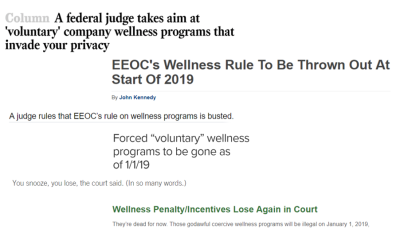 AHIP: It’s not just the headlines
One prominent healthcare executive recently attended an AHIP conference and reports:
I just returned from one of the dumbest meetings I’ve ever attended in Washington. Report of a new “study” by AHIP. Turns out people don’t mind health costs all that much, they just want more benefits. And everything is hunky-dory with their health plans, people like them so much. They love wellness benefits and crave more. Prescription drug prices have been nicely controlled thanks to the competitive marketplace (no, I am not making this up or exaggerating for drama). For every $1 employers spend on benefits workers get $4 in value. Priorities for SHRM rep: Fitbits for all employees, solving the outrage that only 20% of her employees got an annual physical. 85 cents of every dollar spent on healthcare goes to chronic disease.
Over these same two hours, I’d estimate about a thousand employees were misinformed, harmed or harassed by wellness vendors, roughly equal numbers of employees got useless annual checkups, employers spent about $200 million on healthcare and 40 people died in hospitals from preventable errors. But I’m being such a Debbie Downer! I’m going home to read Why Nobody Believes the Numbers to remove myself from this alternative universe.
Enter the Health Enhancement Research Organization (HERO)
HERO’s Prevaricator-in-Chief, Paul Terry, is demonstrating his usual leadership abilities in this crisis, of course. After all, HERO is the wellness industry trade association, and these three items — the NBER invalidating their product, employees hating their product and a federal judge forbidding them to force employees to use their product — represent existential threats to his “pry, poke and prod” members.
Here is quite literally his only blog post on any of these three items:
Teddy Roosevelt said, “complaining about a problem without posing a solution is called whining.” It’s a quote that also reminds me why I’ve not thought of angry bloggers who target health promotion [vendors] as bullies. Though they relish trolling for bad apples, their scolding is toothless, more the stuff of chronic whiners.
I suspect he is talking about me here as the “chronic whiner” who is “scolding” them. Or perhaps he is referring to the “angry bloggers” at the Los Angeles Times, the New York Times, Slate or STATNews, because those “toothless” publications seem to be scolding wellness vendors more than I ever have. For instance, I’ve never called wellness vendors’ offering a “scam” or a “sham.” I simply quote these very stable wellness geniuses verbatim, as above or below, or last week.
See also: Wellness: An Industry Conceived in Lies, Retractions and Hypocrisy
Being quoted verbatim, not angry bloggers, is their worst nightmare. (One thing I would concede, though, is that “Paul Terry and the Angry Bloggers” would be a great name for a rock band.)
Yep, looks like the implosion of his industry is all my fault. Otherwise, I’m not quite sure who is the “angry blogger” he is referring to, other than to note that Mr. Terry himself seems to blog a tad angrily himself, both above, and here…
Why I choose to ignore the blogger critics: We’re fortunate to work in a profession with a scant number of vociferous critics. My take is that there is one thing these few angry loners [Editor’s note: the complete “scant list” of the 220 “few angry loners” who have been “vociferous critics” can be found here] want more desperately than attention: that’s to be taken seriously. What they fail to comprehend is that as they’ve gotten ever more farfetched and vitriolic in search of the former, they’ve cinched their inability to attain the latter.
Baiting people with misinformation and offensive insults (but just a tad under highly offensive) is a pesky ploy that trolls hope will eventually land a bite that confers credibility where there is none. Even reading such drivel is a form of taking the bait; responding is swallowing it whole. Some say dishonesty should not go unchallenged and I respect their view; nevertheless, I’m convinced responding to bloggers who show disdain for our field is an utter waste of time. I’ve rarely been persuaded to respond to bloggers, and each time I did it affirmed my worry that, more than a waste, it’s counter-productive.
…and especially here, a seemingly incongruous decision to “act out” by someone who claims to be “choosing to ignore the blogger critics.”
Having read years of my “drivel” alongside Mr. Terry’s posting explaining why you shouldn’t “swallow this bait,” perhaps readers might opine here: Which of us, exactly, is the “chronic whiner”?
Coincidentally, when I run live health-and-wellness trivia contests, the first of our three rules is: No Whining. Seems to me that he would have just violated it. Indeed the only rule HERO hasn’t violated so far is #3 below. Not that I want to put ideas in their head.
AHIP: It’s not just the headlines
One prominent healthcare executive recently attended an AHIP conference and reports:
I just returned from one of the dumbest meetings I’ve ever attended in Washington. Report of a new “study” by AHIP. Turns out people don’t mind health costs all that much, they just want more benefits. And everything is hunky-dory with their health plans, people like them so much. They love wellness benefits and crave more. Prescription drug prices have been nicely controlled thanks to the competitive marketplace (no, I am not making this up or exaggerating for drama). For every $1 employers spend on benefits workers get $4 in value. Priorities for SHRM rep: Fitbits for all employees, solving the outrage that only 20% of her employees got an annual physical. 85 cents of every dollar spent on healthcare goes to chronic disease.
Over these same two hours, I’d estimate about a thousand employees were misinformed, harmed or harassed by wellness vendors, roughly equal numbers of employees got useless annual checkups, employers spent about $200 million on healthcare and 40 people died in hospitals from preventable errors. But I’m being such a Debbie Downer! I’m going home to read Why Nobody Believes the Numbers to remove myself from this alternative universe.
Enter the Health Enhancement Research Organization (HERO)
HERO’s Prevaricator-in-Chief, Paul Terry, is demonstrating his usual leadership abilities in this crisis, of course. After all, HERO is the wellness industry trade association, and these three items — the NBER invalidating their product, employees hating their product and a federal judge forbidding them to force employees to use their product — represent existential threats to his “pry, poke and prod” members.
Here is quite literally his only blog post on any of these three items:
Teddy Roosevelt said, “complaining about a problem without posing a solution is called whining.” It’s a quote that also reminds me why I’ve not thought of angry bloggers who target health promotion [vendors] as bullies. Though they relish trolling for bad apples, their scolding is toothless, more the stuff of chronic whiners.
I suspect he is talking about me here as the “chronic whiner” who is “scolding” them. Or perhaps he is referring to the “angry bloggers” at the Los Angeles Times, the New York Times, Slate or STATNews, because those “toothless” publications seem to be scolding wellness vendors more than I ever have. For instance, I’ve never called wellness vendors’ offering a “scam” or a “sham.” I simply quote these very stable wellness geniuses verbatim, as above or below, or last week.
See also: Wellness: An Industry Conceived in Lies, Retractions and Hypocrisy
Being quoted verbatim, not angry bloggers, is their worst nightmare. (One thing I would concede, though, is that “Paul Terry and the Angry Bloggers” would be a great name for a rock band.)
Yep, looks like the implosion of his industry is all my fault. Otherwise, I’m not quite sure who is the “angry blogger” he is referring to, other than to note that Mr. Terry himself seems to blog a tad angrily himself, both above, and here…
Why I choose to ignore the blogger critics: We’re fortunate to work in a profession with a scant number of vociferous critics. My take is that there is one thing these few angry loners [Editor’s note: the complete “scant list” of the 220 “few angry loners” who have been “vociferous critics” can be found here] want more desperately than attention: that’s to be taken seriously. What they fail to comprehend is that as they’ve gotten ever more farfetched and vitriolic in search of the former, they’ve cinched their inability to attain the latter.
Baiting people with misinformation and offensive insults (but just a tad under highly offensive) is a pesky ploy that trolls hope will eventually land a bite that confers credibility where there is none. Even reading such drivel is a form of taking the bait; responding is swallowing it whole. Some say dishonesty should not go unchallenged and I respect their view; nevertheless, I’m convinced responding to bloggers who show disdain for our field is an utter waste of time. I’ve rarely been persuaded to respond to bloggers, and each time I did it affirmed my worry that, more than a waste, it’s counter-productive.
…and especially here, a seemingly incongruous decision to “act out” by someone who claims to be “choosing to ignore the blogger critics.”
Having read years of my “drivel” alongside Mr. Terry’s posting explaining why you shouldn’t “swallow this bait,” perhaps readers might opine here: Which of us, exactly, is the “chronic whiner”?
Coincidentally, when I run live health-and-wellness trivia contests, the first of our three rules is: No Whining. Seems to me that he would have just violated it. Indeed the only rule HERO hasn’t violated so far is #3 below. Not that I want to put ideas in their head.
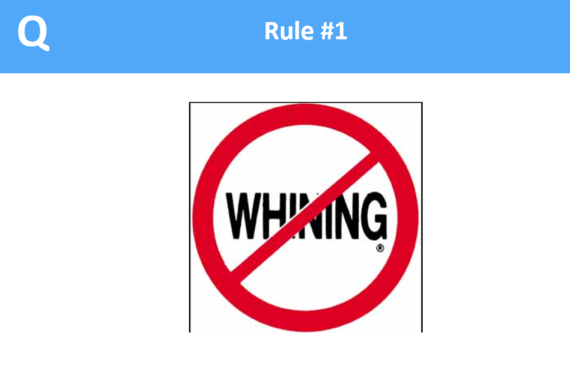
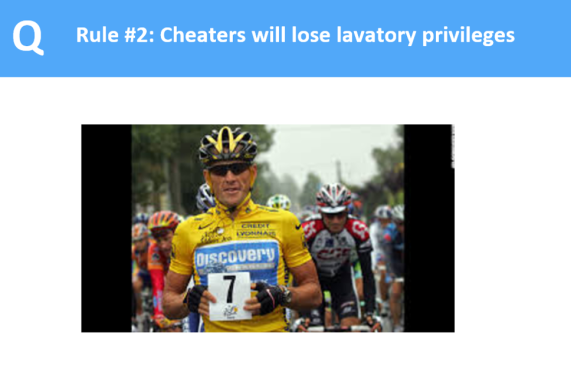
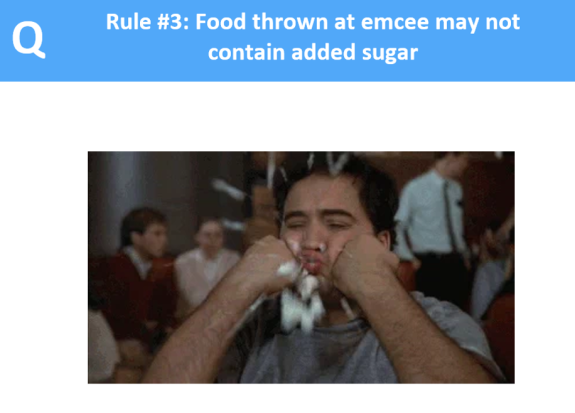
Get Involved
Our authors are what set Insurance Thought Leadership apart.
|
Partner with us
We’d love to talk to you about how we can improve your marketing ROI.
|

Al Lewis, widely credited with having invented disease management, is co-founder and CEO of Quizzify, the leading employee health literacy vendor. He was founding president of the Care Continuum Alliance and is president of the Disease Management Purchasing Consortium.
Don’t just copy other life insurers; learn from the best-in-class companies outside your own sector and apply these principles to your own business.

Get Involved
Our authors are what set Insurance Thought Leadership apart.
|
Partner with us
We’d love to talk to you about how we can improve your marketing ROI.
|

Onno Bloemers is one of the founding partners at First Day Advisory Group. He has longstanding experience in delivering organizational change and scalable innovation in complex environments.
While data is considerably safer these days in the cloud, no cyberinsurance policy can substitute for active vigilance.

Get Involved
Our authors are what set Insurance Thought Leadership apart.
|
Partner with us
We’d love to talk to you about how we can improve your marketing ROI.
|

Adam Stern, founder and CEO of Los Angeles-based Infinitely Virtual, is an entrepreneur who saw the value of virtualization and cloud computing. Stern’s company helps businesses move from obsolete hardware investments to an IaaS [Infrastructure as a Service] cloud platform, providing them the flexibility and scalability to transition select data operations from in-house to the cloud.
It makes sense that insurers should be excellent at managing their own strategic, financial and operational risk. But is that always the case?

Get Involved
Our authors are what set Insurance Thought Leadership apart.
|
Partner with us
We’d love to talk to you about how we can improve your marketing ROI.
|

Donna Galer is a consultant, author and lecturer.
She has written three books on ERM: Enterprise Risk Management – Straight To The Point, Enterprise Risk Management – Straight To The Value and Enterprise Risk Management – Straight Talk For Nonprofits, with co-author Al Decker. She is an active contributor to the Insurance Thought Leadership website and other industry publications. In addition, she has given presentations at RIMS, CPCU, PCI (now APCIA) and university events.
Currently, she is an independent consultant on ERM, ESG and strategic planning. She was recently a senior adviser at Hanover Stone Solutions. She served as the chairwoman of the Spencer Educational Foundation from 2006-2010. From 1989 to 2006, she was with Zurich Insurance Group, where she held many positions both in the U.S. and in Switzerland, including: EVP corporate development, global head of investor relations, EVP compliance and governance and regional manager for North America. Her last position at Zurich was executive vice president and chief administrative officer for Zurich’s world-wide general insurance business ($36 Billion GWP), with responsibility for strategic planning and other areas. She began her insurance career at Crum & Forster Insurance.
She has served on numerous industry and academic boards. Among these are: NC State’s Poole School of Business’ Enterprise Risk Management’s Advisory Board, Illinois State University’s Katie School of Insurance, Spencer Educational Foundation. She won “The Editor’s Choice Award” from the Society of Financial Examiners in 2017 for her co-written articles on KRIs/KPIs and related subjects. She was named among the “Top 100 Insurance Women” by Business Insurance in 2000.